This circuit is about 3 km, starting and ending at the Hotel. It covers the Imperial Forum and the Aventine hill and returns either via Circo Massimo or the Baths of Caracalla.
![]()
Walks & Excursions
AVENTINO WALK
Circus Massimo
Rome’s largest hippodrome where 200,000 spectators could watch chariots race around the 600 mt track. Statues of various Gods were set up in the spina of the circus and the obelisk of Ramses II brought by Augustus in 10 BC. The obelisk was moved to Piazza del Popolo in the 16th century.
The circus remained in use until 549.The Circus still occasionally entertains the Romans, it is often used for live concerts and meetings.
Chiesa di Santa Maria Cosmedin
Built in the 6th century over the ruins of the Templum Herculis Pompeiani, it is one of the finest medieval churches in Rome. The church was built with three naves and a portico. Because of its beauty, the adjective cosmedin was added to its name (from Greek kosmidion), beautiful.
The famous ‘Bocca della Verità’ is in the portico of the church. The Bocca della Verita (the mouth of truth) is a great stone mask with a gaping mouth.Legend has it that anyone who lies while their hand is in its mouth will have it bitten off.
Across the road are two well preserved Roman temples to Ercole and Portuno.
Parco degli Aranci (Parco Savello)
This small park is lined with orange trees and offers a magnificent panoramic view over the Tiber river and Rome.
Basilica di S Sabina
The church dates from the 10th century. Cosmati marble work from the 13th century decorate the main floor. In the portico are some interesting examples of how imperial-era marble was recycled.
Piazza dei Cavalieri di Malta
A look through the keyhole in the great door to the priory of the Knights of Malta offers a charming surprise.
Pyramid of Caio Cestio
Built in travertine marble about 18 BC -12 BC as a tomb for the magistrate Gaius Cestius Epulo. It was incorporated into the Aurelian walls when these were erected between 271 and 275. The city-wall gate Porta San Paolo next to the Pyramid is also very beauitiful and houses a small museum.
The Non-Catholic Cemetery of Rome
Shelly wrote of this cemetery “it might make one in love with death to think that one should be buried in so sweet a place”. John Keats, Percy & Mary Shelly and Goethe are buried here, and the shady cemetery offers timeless views of the Pyramid and Aurelian wall. (see protestantcemetry.it)
Aurelian Wall
Construction of these walls was started by Emperor Aurelian in 271 and completed by his successor Probus in 275. It stretches 19 km around the city with 18 main gates and 383 towers. In the 4th century Emperor Maxentius raised the wall to almost double its height. Most of the wall survives to this day.
Chiesa di S Saba
The church was founded in the 7th century by followers of St Saba who reproduced their convent in Jerusalem founded by St Saba in the 5th century.
The beautiful doorway (1205) is by Giacomo, father of Cosma, the founder of the famous marble inlay makers.
Chiesa di S Balbina
The church was built in the 4th century over the other ancient constructions. The church was returned to its Romanesque origins in 1930.
The floor is covered by some 1st century A.D. Roman black-and-white mosaics. The apse is decorated with a big mannerist painting of the 16th century.
Terme di Caracalla
The Baths of Caracalla were Roman public baths built between AD 212 and 216 and were used for 300 years until the Goth invaders cut the aqueduct and thus water supplies. The huge complex covered 13 hectares and could accommodate up to 1600 bathers , who could enjoy richly decorated steam rooms, swimming pools, gymnasiums, libraries, shops and gardens.
San Gregorio Magno
The current edifice was rebuilt on the old site to designs by Giovanni di Soria in 1629-1633, commissioned by Cardinal Scipione Borghese work was suspended with his death, and taken up again in in 1642. Francesco Ferrari(1725-1734) designed the interior.
From the broad stairway you can enjoy a wonderful view of the Palatine.
San Giovanni e Paolo
An ancient basilica built in 398 by the senator Pammachius over the homes of the Roman soldiers John and Paul martyred under Julian in 362.
The portico dates from the 12th century and is embellished by columns of Roman origin. The altar is built over a bath, which holds the remains of the two martyrs. The apse is frescoed with Christ in Glory (1588) by Cristoforo Roncalli. Excavations beneath this church have revealed Roman houses of the first and second centuries used as places of Christian worship.
The bell tower is typical of many medieval churches in Rome. The tower is decorated with ceramic dishes from Spain (at the time under the Moors) and is decorated with inscriptions dedicated to Allah.
Acqua Claudia
The aqueduct was built by Emperor Claudius in 52 AD and supplied water to the Palatine hill.The aqueduct entered the city from Porta Maggiore, and its arches can can be seen at many points, woven into the city’s fabric, as it passes San Giovanni and over Via Clivo Scauro and Via San Gregorio onto the Palatine.

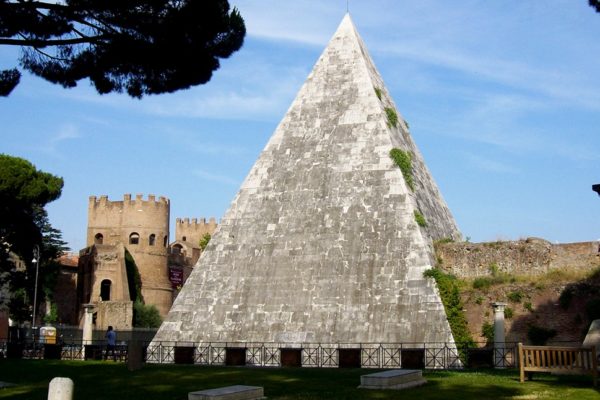
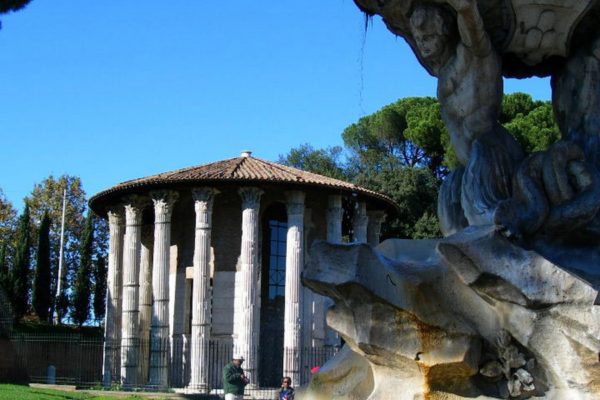
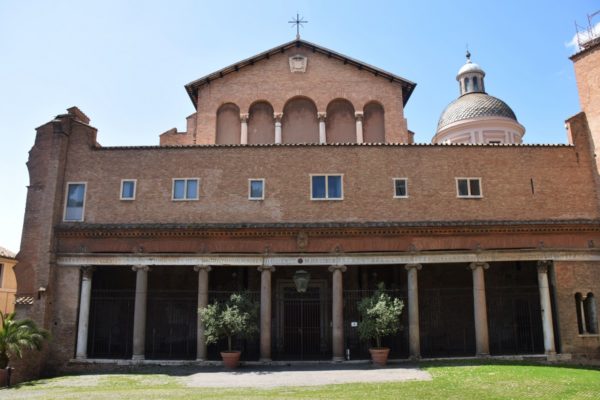
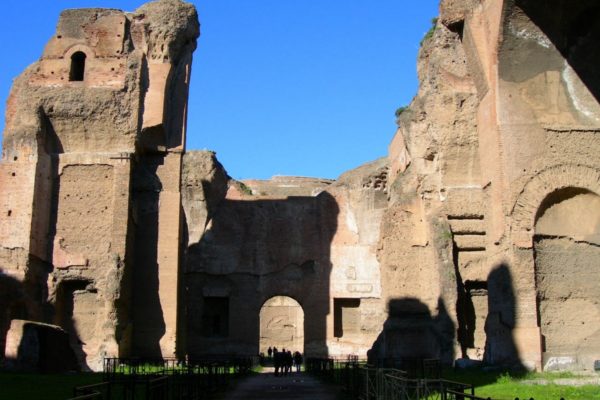
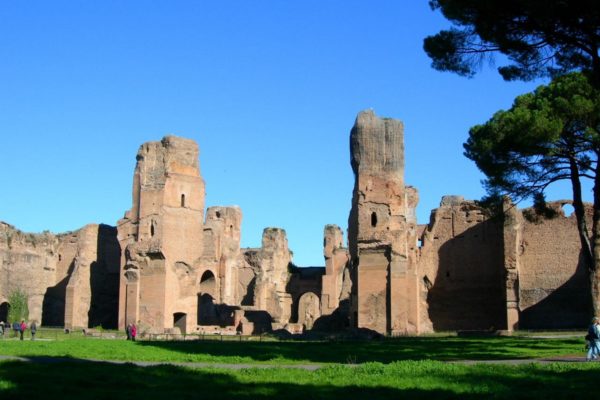
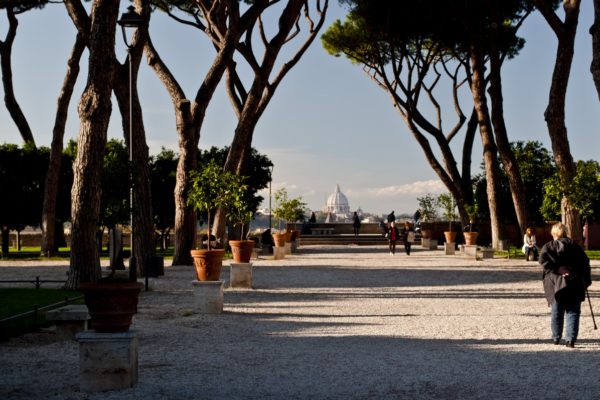


 NEWS AND EVENTS
NEWS AND EVENTS



